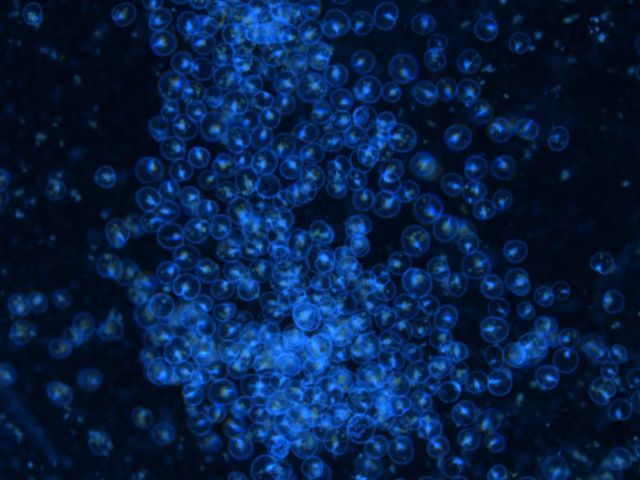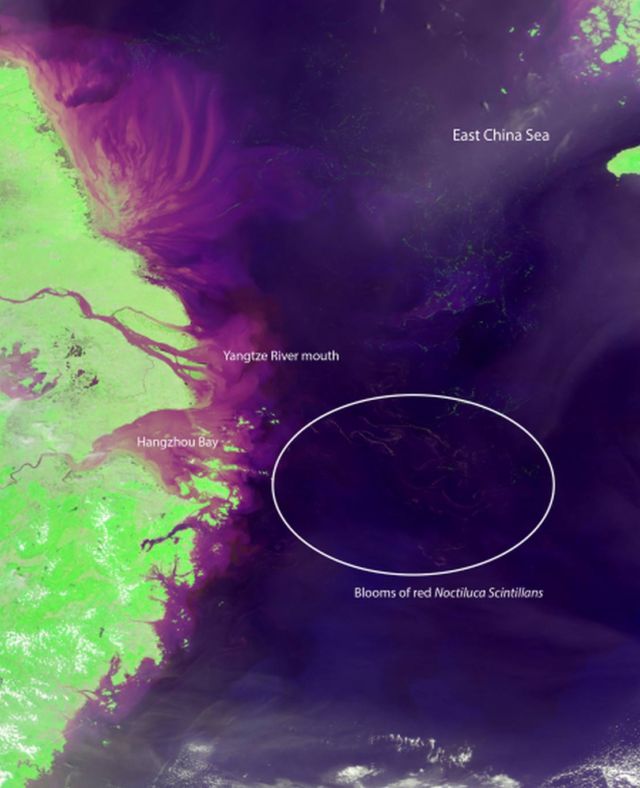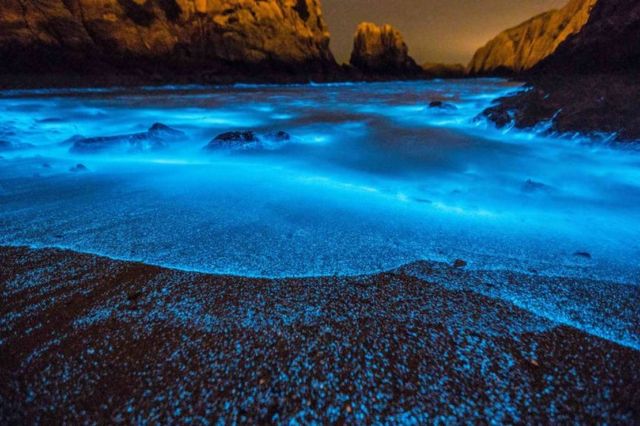China’s amazing ‘blue tears’ plankton blooms are spreading, but it can be toxic.
Satellite images from 2000-2017 showing the sparkling bioluminescent Blue Tears that light up the East China Sea at night, has grown in recent years.
This type of plankton, known as sea sparkles, glow blue when disturbed by the water’s movement, like waves.
Above, blue bioluminescence produced by red Noctiluca scintillans near Taiwan’s Matsu Islands. Researchers now have a way to study the sparkly organisms by satellite. Credit: Yu-Xian Yang, Lienchiang county government, Taiwan

Individual cells of red Noctiluca scintillans seen glowing blue under a microscope. The organism’s balloon-shaped bodies give them the buoyancy to float on the sea surface where humans can observe them. Credit: Sheng-Fang Tsai, National Taiwan Ocean University
Scientists report in a new study they have found a way for satellites to track the bioluminescent plankton responsible for producing “blue tears” in China’s coastal waters and found the sparkly creatures have become more abundant in recent years.
Red Noctiluca scintillans are single-celled organisms found in coastal waters all over the world. Commonly known as sea sparkles, at night they glow a bright blue when disturbed by swimmers, waves or passing boats. The sea sparkles’ dazzling blue light, often called “blue tears,” can be seen after dark on many of China’s shores and have become a major tourist attraction in recent years, especially in Taiwan’s Matsu Islands.

A satellite image of the East China Sea, taken by NASA’s MODIS instrument, showing blooms of red Noctiluca scintillans east of Hangzhou Bay. Credit: NASA/University of South Florida optical oceanography lab.
Scientists report in AGU’s journal Geophysical Research Letters they have developed a way to track red Noctiluca scintillans blooms by satellite using the organism’s unique ability to absorb and scatter light. The new method could help researchers better track harmful red tides and boost tourism on China’s east coast.






Leave A Comment